
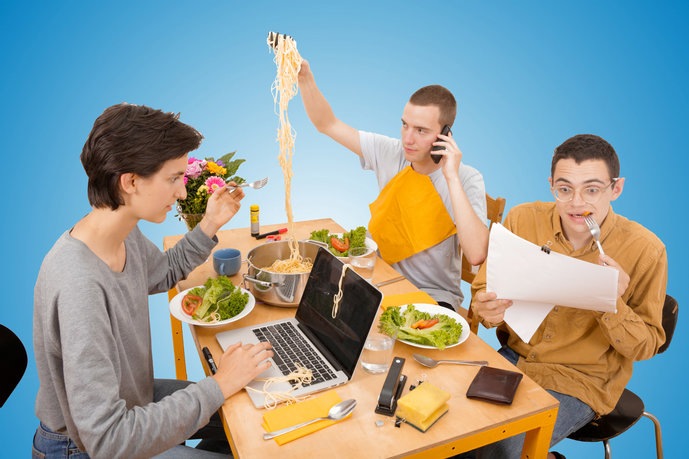
© Alex Theis

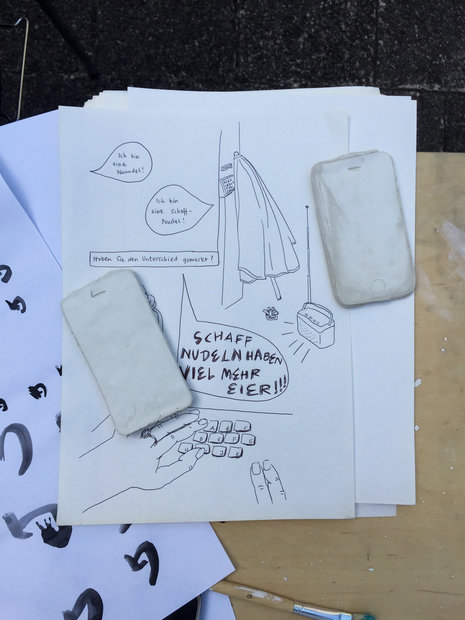
© Moritz Appich, Mona Mayer und Bruno Jacoby

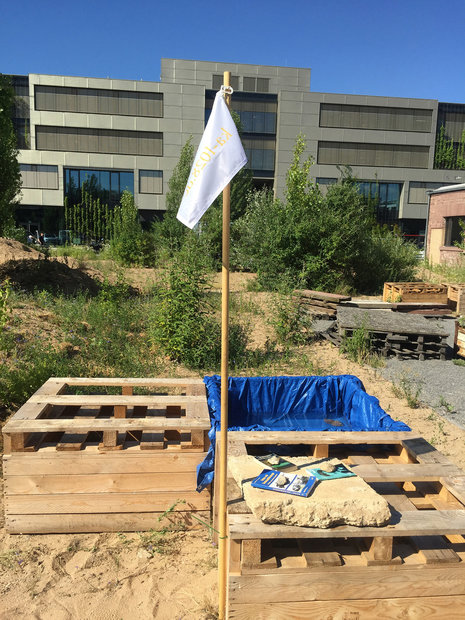
© Moritz Appich, Mona Mayer und Bruno Jacoby

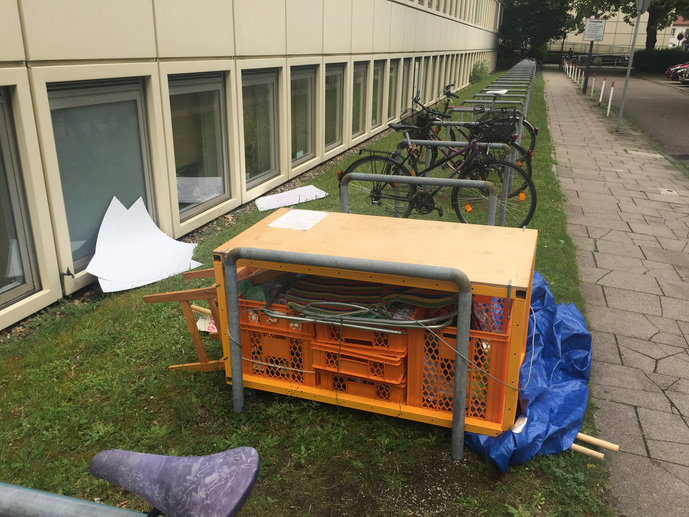
© Moritz Appich, Mona Mayer und Bruno Jacoby

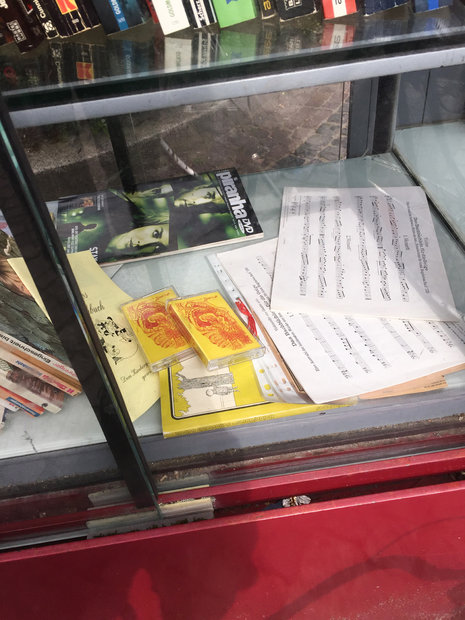
© Moritz Appich, Mona Mayer und Bruno Jacoby

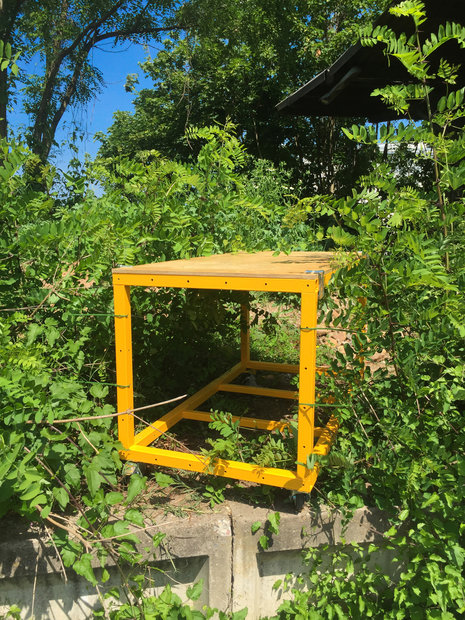
© Moritz Appich, Mona Mayer und Bruno Jacoby

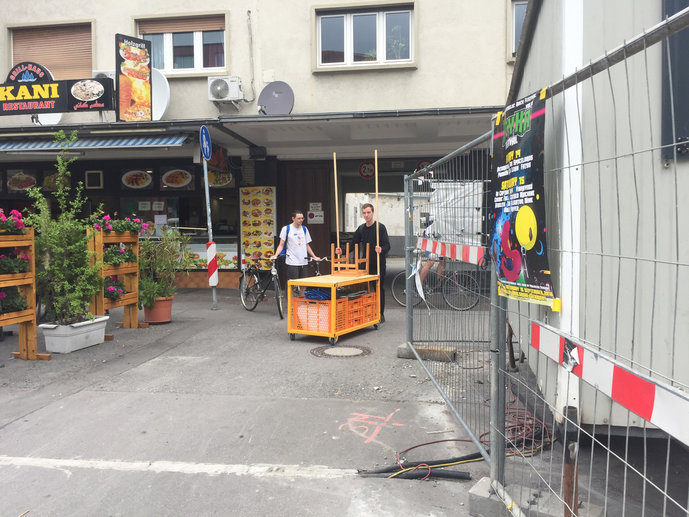
© Moritz Appich, Mona Mayer und Bruno Jacoby

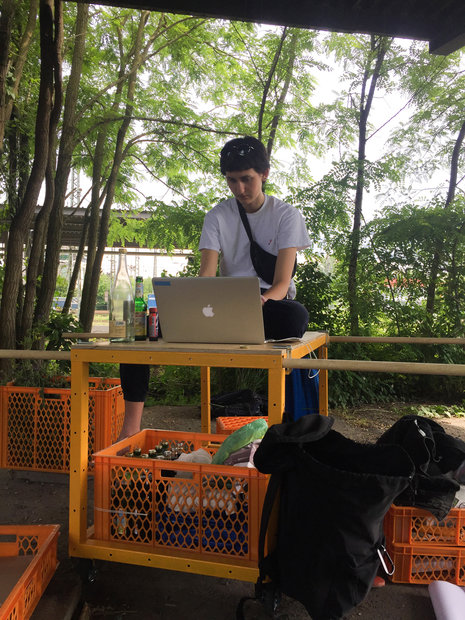
© Moritz Appich, Mona Mayer und Bruno Jacoby


© Moritz Appich, Mona Mayer und Bruno Jacoby
(1) After their original plan – to rent an off-space – failed, the three students decided to make the best of a bad situation and work with the space they had: the city.
Beginning at point zero, there was only one fixed idea: to spend time together, work, trying out and see what would happen. Spring was coming, sun was shining: they wanted to make it happen outside.
So it made sense to move between a number of public spaces, a rhythm that also defined their working method. They wanted to work quickly and react to the different places and their requirements.
In order to enforce a certain speed and to maintain freedom in the content they worked on, they defined a set of rules: to stay in a different place every week for six weeks, and all three would be present five days a week, eight hours a day.
(2) In the following, when you read “we did” imagine:
One or two started doing something, maybe they left, the third person re-started or jumped in. Discussions. One continued alone, the others jumped in again and so on and son . We had the possibility to borrow each others techniques and benefit from each other’s interests.
Imagine playing the classic game of “Jenga”: pulling a block out of an existing tower and putting it on top until you get higher and higher. Sometimes it is a bit shaky but you want to continue to play because it is fun and you want to see how far you can go.
Now imagine playing three towers at once, each one in another color. You don’t know what this game of three colour-coded “Jenga” towers is and how it works. But you play anyways and start pulling blocks out of all the towers and mix the colours and suddenly you have a weird “Jenga” construction that isn’t a tower anymore, but it’s colourful and maybe something else entirely. If one corner breaks down, you have some more blocks of another colour to put on top.
(3) They documented everything. Everything had to be accessible to everyone at all times. Different mediums were chosen for documentation and collection: a sketchbook to quickly record situations and thoughts, as they were an important part of the project; a hard drive to collect everything digital and photographs and storage boxes for physical objects.
The boxes were stored in a cart they built to their needs. This became the central piece of the project. It served as a working station, as a signpost marking the space they were occupying, and as a container for their collective memory.
(4) For the first week, Moritz, Bruno and Mona stayed in the backyard of a residential building complex. Despite its potential, the space wasn‘t really used. By the end of the week they had invited friends and neighbors to watch ‘lovers on the run’ movies in an empty garage they had transformed into a cinema.
While staying on an abandoned railway platform, they find many relics of people who had been there before. Out of a mixture of fascination and disgust, they document everything by photographing them. They then designed and printed a pamphlet and distributed it in the official part of the station, to bring the, for a majority, unseen but nearish into it and share their impressions.
Fascinated by the surrounding plants and interested in making objects, they started to collect parts of plants and turned them into pieces of clothing. Their actions appropriated the place (“cleaning it up”) and were being influenced by it at the same time. Afterwards they did a fashion shoot inside the main station.
In a small square they found a public bookshelf, where people can donate or take books for free. They combined the stories of the books and the field recordings they took of the surroundings into an audiotape, which in turn told a new story about the square. They placed copies of the tape back on the shelf so people could listen to it.
For one week they ran a hairdressing salon at the Technological University campus. On the one hand, Mona wanted to improve her haircutting skills, on the other hand it was an opportunity to get in touch with the students and to showcase the project. And just like that, they became part of the big student assembly jubilee by opening a personalized t-shirt service during the festivities. Students could fill out a personality-test and they would provide an individual t-shirt design to fit each customers’ character.
In the deserted area next to a shared office-space for cultural industry companies, the three were exhausted by the heat and the ‘pseudo-creative’ surroundings. With the help of a local bistro owner and a bit of audacity, they built a public pool and closed the project with an Aperol pool party.
(5) During the process, a lot of thoughts and materials accumulated. To gain an overview of the six weeks, they arranged them in a printed publication. With the use of the copy machine, they opted for a fast way to arrange objects, photographs, notes and drawings to formulate one possible story of the project.
The open, spontaneous way of working and the constraints of the places allowed them to react to topics they would never have arrived at within their usual working habits, neither working alone.
Important topics they were confronted with included, how to position themselves (as designers) in a public space? How to communicate with a diffuse audience? What do I contribute to my surroundings and the other way around? What happens if you spend a certain amount of time in a random space and how may it be occupied?
The three students see the framework as one big tool that helped them come to a different mindset while working and opened these new questions for them.
Tutors: Rebecca Stephany und Sereina Rothenberger